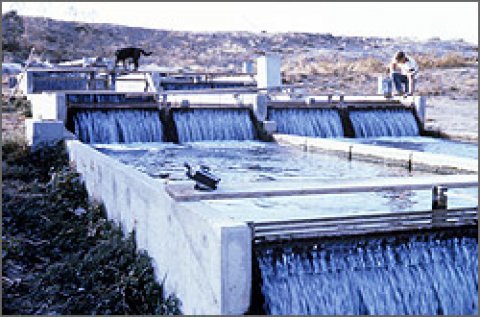To isolate geothermal fluids from the environment, including groundwater sources, production and injection wells in direct-use systems are lined with cement and steel, fiberglass, or thermoplastics. The method chosen for disposing of fluids depends on the quality of the fluids, local hydrological conditions, and environmental regulations. In some instances, these fluids, once cooled, can be safely discharged to surface water. However, if the fluids contain levels of certain chemical constituents—such as boron, fluoride, and total dissolved solids—above required environmental standards, the direct-use systems will treat them, inject them, or both.
In general, the total dissolved-solids content increases with the temperature of geothermal fluids. Therefore, the geothermal fluids used for direct-use applications typically contain less than those used for geothermal power, but more than most cold-water sources. Geothermal fluids used for direct-use applications contain between 400 to 3,000 part per million (ppm) of total dissolved solids. Most drinking water standards limit the amount of total dissolved solids at 1,000 ppm primarily for taste, not health considerations.


